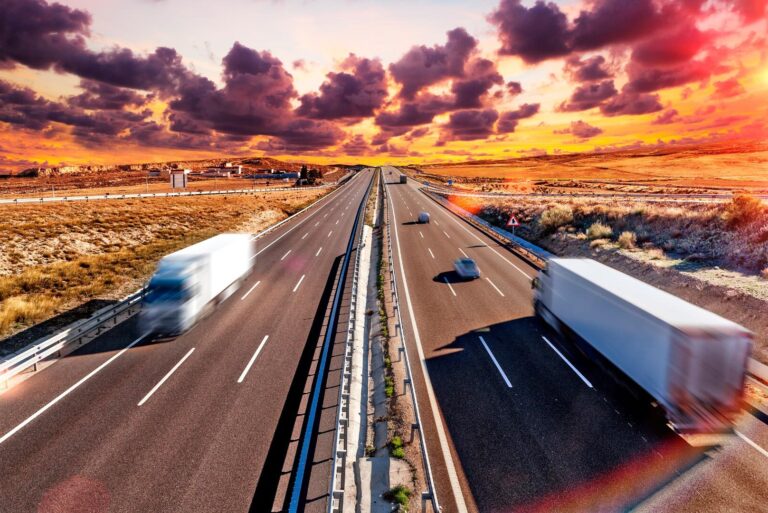A Decade of Change: How California's LCFS Has Transformed the Transportation Sector
April 25, 2023
Over the past decade, the Low Carbon Fuel Standard (LCFS) has played a pivotal role in reducing greenhouse gas emissions from California’s transportation sector. The program has incentivized the use of low carbon fuels, electric vehicles, and other zero-emission transportation technologies, leading to significant emissions reductions and cleaner air.
This article will explore how the LCFS program has impacted California's transportation sector over the past ten years, including changes in fuel consumption, the adoption of zero-emission vehicles, and the economic benefits of the program. We'll also take a look at what the future holds for the LCFS and the continued transition toward a more sustainable transportation system.
Ten Years of the LCFS
The LCFS was adopted in 2009 and implemented in California’s transportation sector in 2011. Since then, the transportation sector – both in California and the country as a whole – has seen major changes as a result of incentives to diversify California’s fuel pool and reduce the dependency on oil-based fuels. The program encourages fuel producers to lower their emissions by incorporating low-carbon fuels while incentivizing commercial vehicle owners to transition to alternative fuel vehicles.
Get more background information in our article, Unlocking the Potential of Low Carbon Fuel Standard Credits in California: How the LCFS Works
Changes in Fuel Consumption
Since the implementation of the LCFS program, California has seen a steady decrease in gasoline and diesel consumption. Diesel consumption peaked in 2007 with approximately 4.1 billion gasoline gallon equivalents (GGE) and has since decreased to 3.7 billion GGE as of 2020. Similarly, gasoline usage has dropped from a peak of 16.3 billion GGE in 2006 to 12.7 billion GGE in 2021.
The downward trends of fossil fuel usage have been slow and gradual, but have kept up with the LCFS’s intended trajectory. The number of electric vehicles in California is increasing and is expected to continue to grow. Other alternative fuels – including natural gas, biodiesel, and renewable diesel – have also seen a substantial increase in usage.
The California Air Resources Board (CARB), which oversees the LCFS, expects these trends towards zero-emission vehicles to continue over the coming decades as more of California’s fuel pool continues to diversify and alternative fuels become more widely available. The LCFS has met its annual reduction benchmarks in carbon intensity (CI) reductions, which signify how clean the State’s overall fuel pool is, and has just reached its goal of a 10% reduction in CI ratings as of 2022.
Changes in California’s Market
In recent years, the LCFS has become a major factor in California’s economy, as it has incentivized investments in low-carbon fuel production and technologies and created jobs in the electric vehicle and clean energy sector. Most notably, the LCFS has supported the adoption of electric vehicles by thousands of companies across the state.
A growing number of EV owners are opting into the program and receiving credits for their reduced emissions. The revenue earned from LCFS credits has enabled fleet owners to further transition their vehicle fleets to clean fuels, as well as incentivize improvements in California’s fuel station infrastructure. Partially as a result of the LCFS, California now has around 40,000 alternate fueling stations across the state, largely between major metropolitan areas that previously lacked crucial fueling and charging stations. This number is anticipated to increase with the incentives provided by the LCFS.
Read more about how EV fleet owners can maximize the value of their credits: Understanding Low Carbon Fuel Standard Credit Prices: What California EV Fleet Owners Need to Know
The Future of California’s Transportation
The LCFS has reached all of its benchmark reductions in CI since 2011 and has largely succeeded in diversifying California’s fuel pool while driving the development of new facilities through market-based incentives. As the LCFS program continues to impact the state’s transportation sector and economy, these changes are expected to increase through more widely available alternative and low-carbon fuels, more accessible fuel stations for alternative fuels, and increased incentives for fleets to transition to electric vehicles. As the LCFS continues, CARB is also currently reevaluating the incentives that drive the LCFS credit market in an attempt to make the market more competitive.

Read more about the LCFS and how fleet owners can earn revenue by reducing their emissions: California’s LCFS Program
Ready to start earning LCFS credits? Get in touch with us today, and our Energy Program Manager will reach out within 48 hours.
Related Posts










